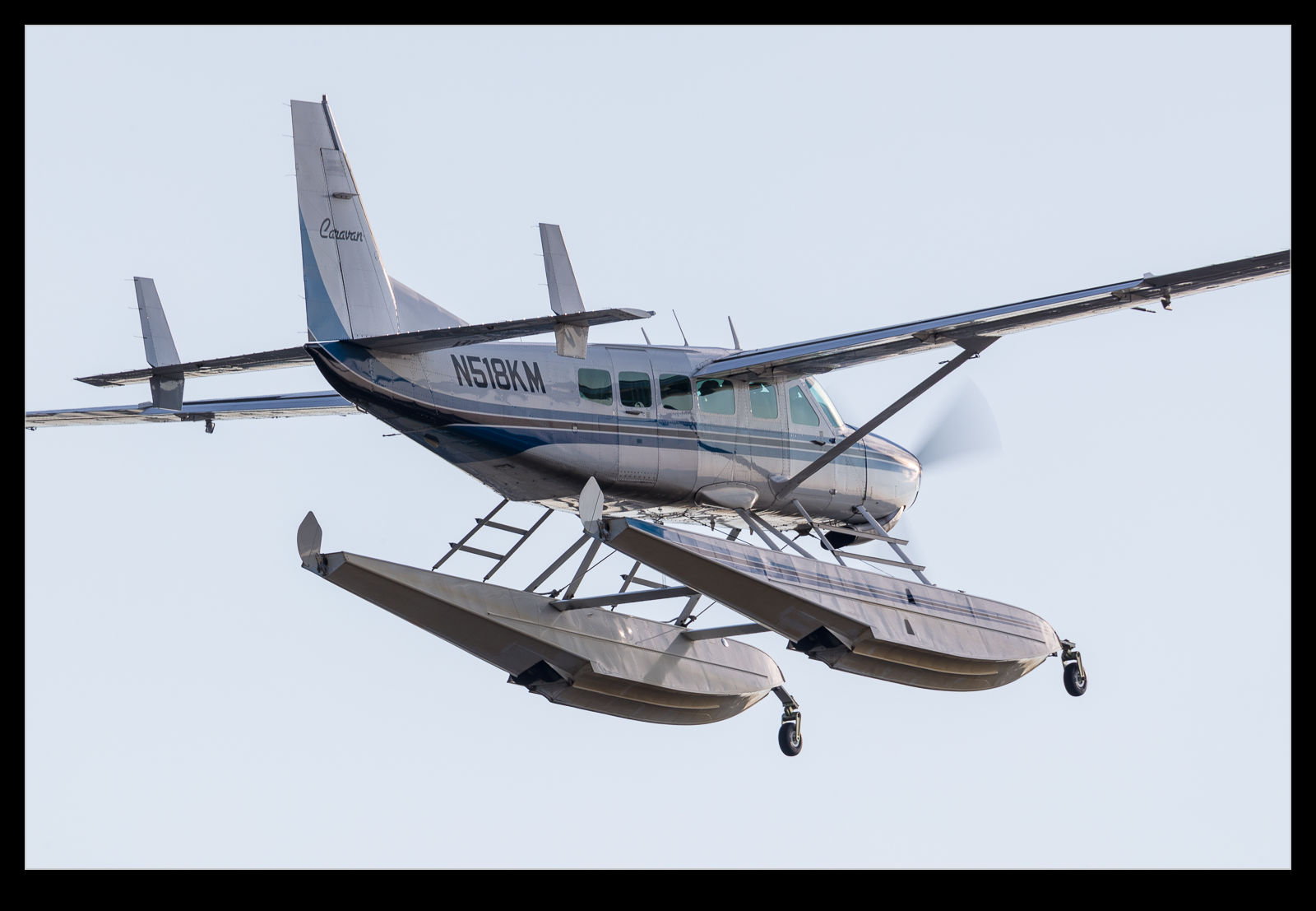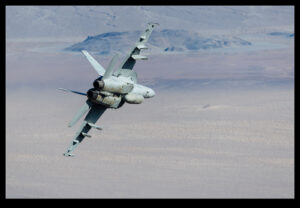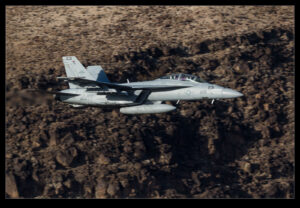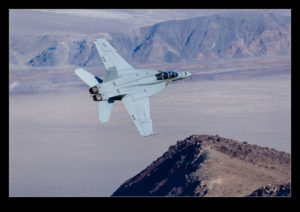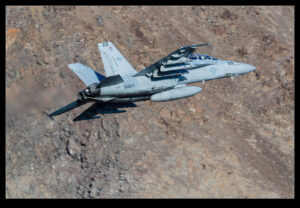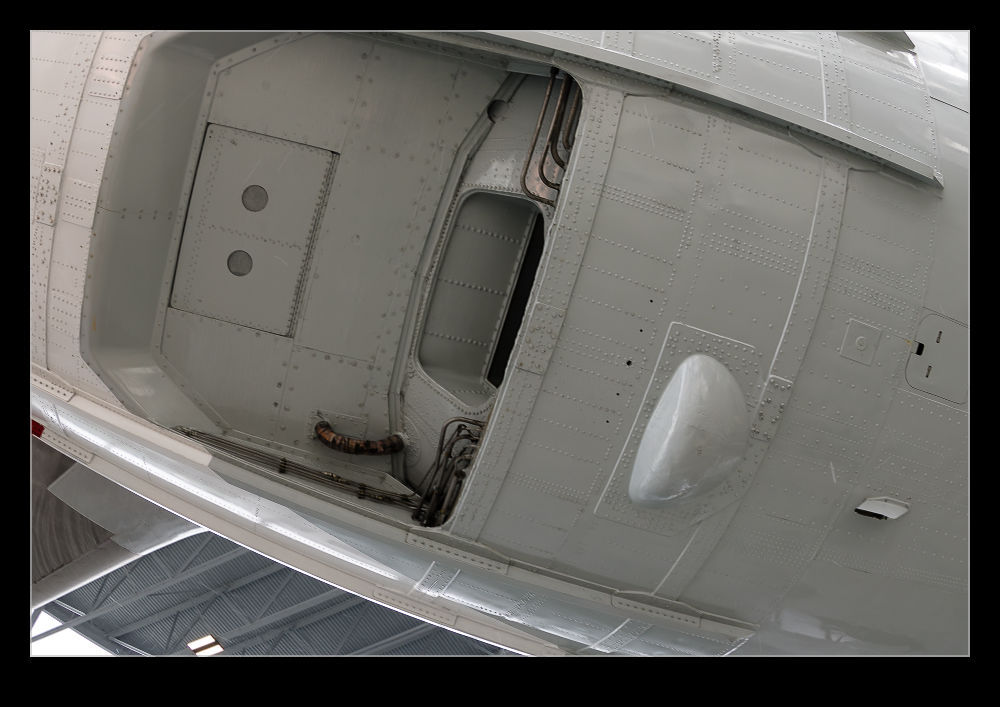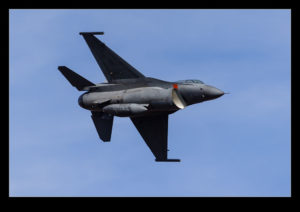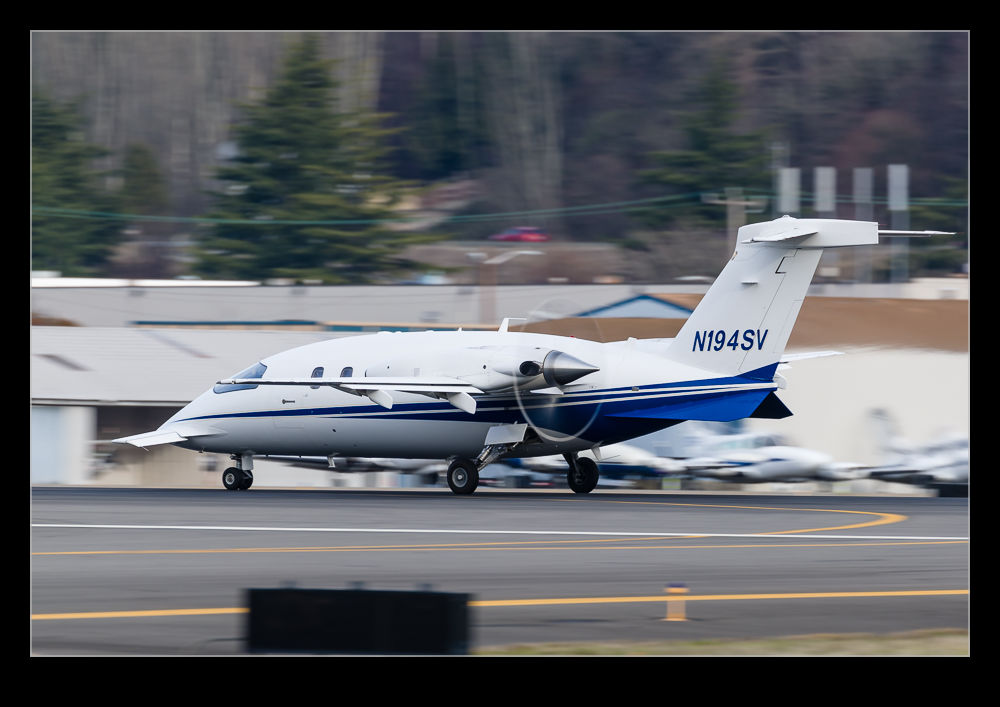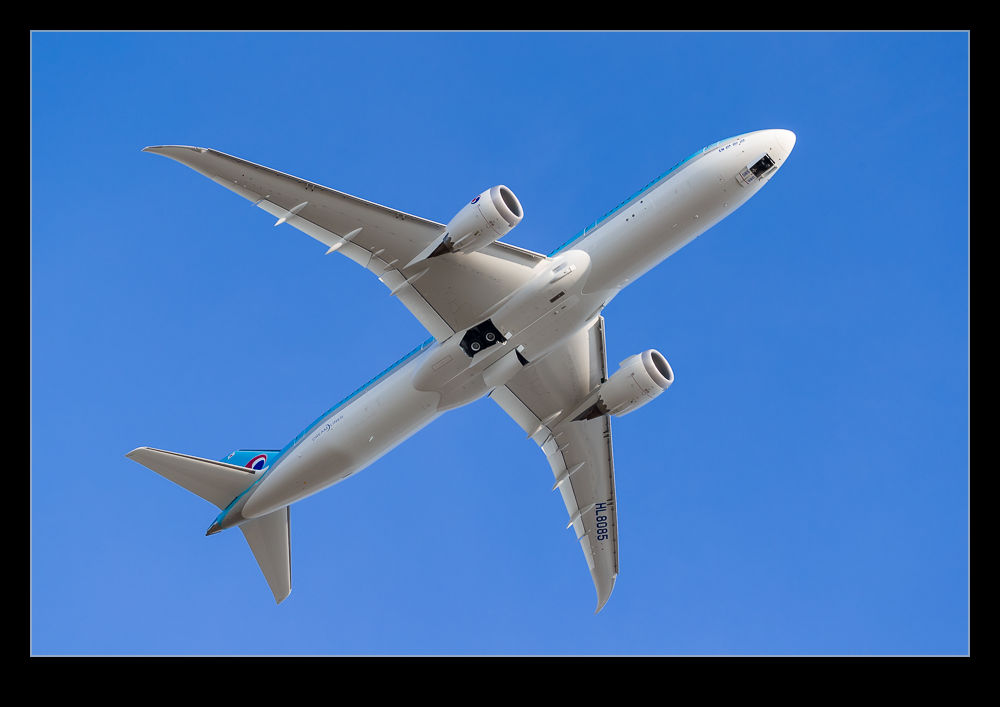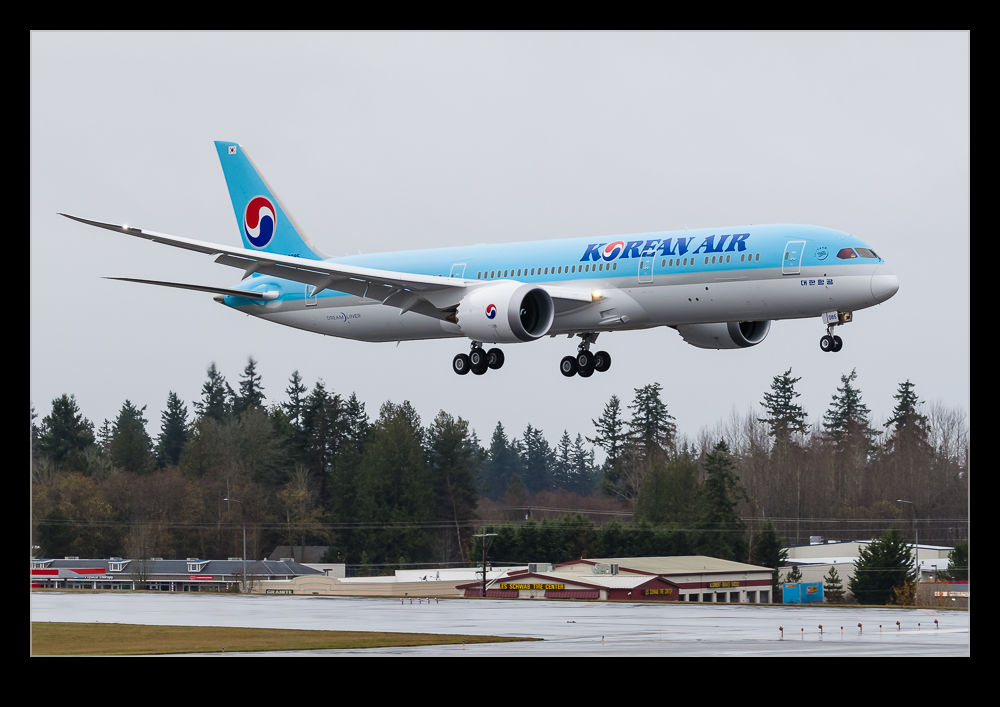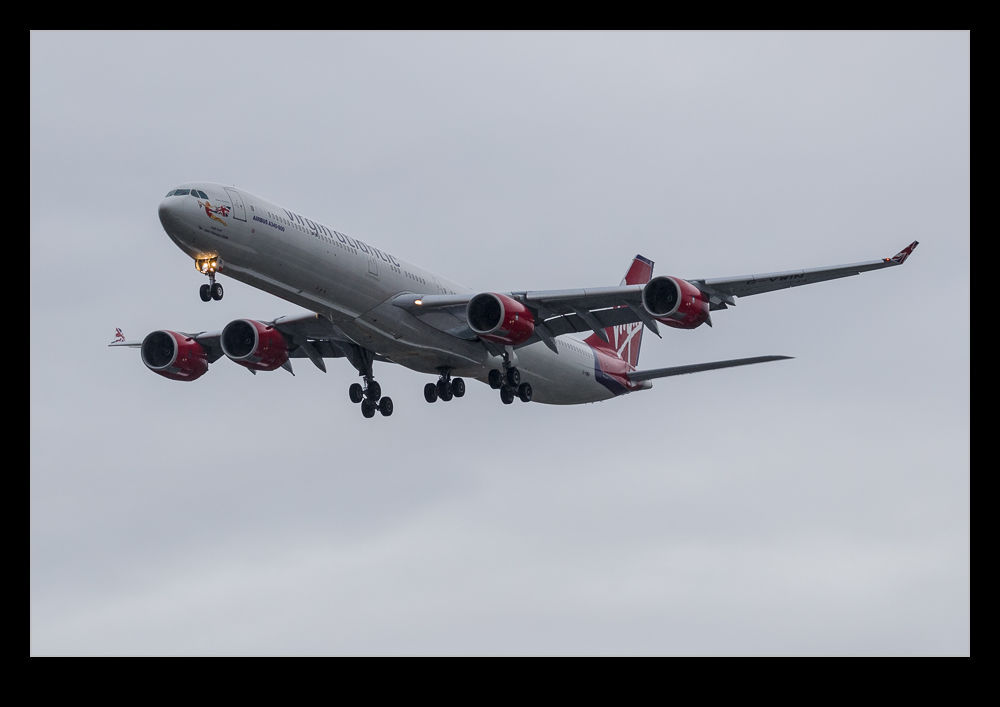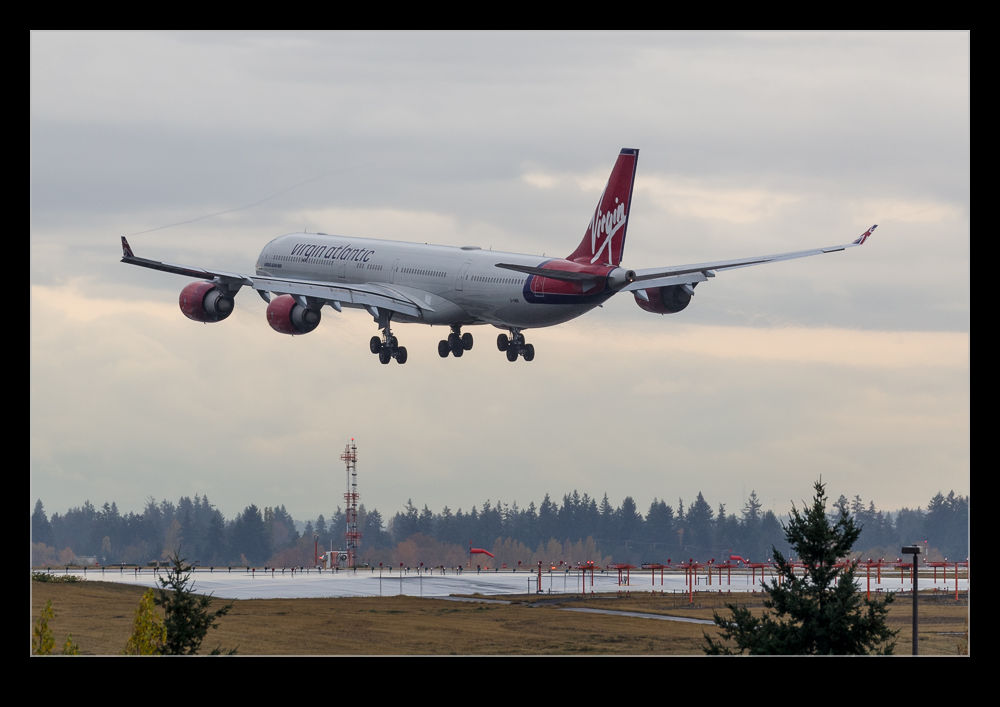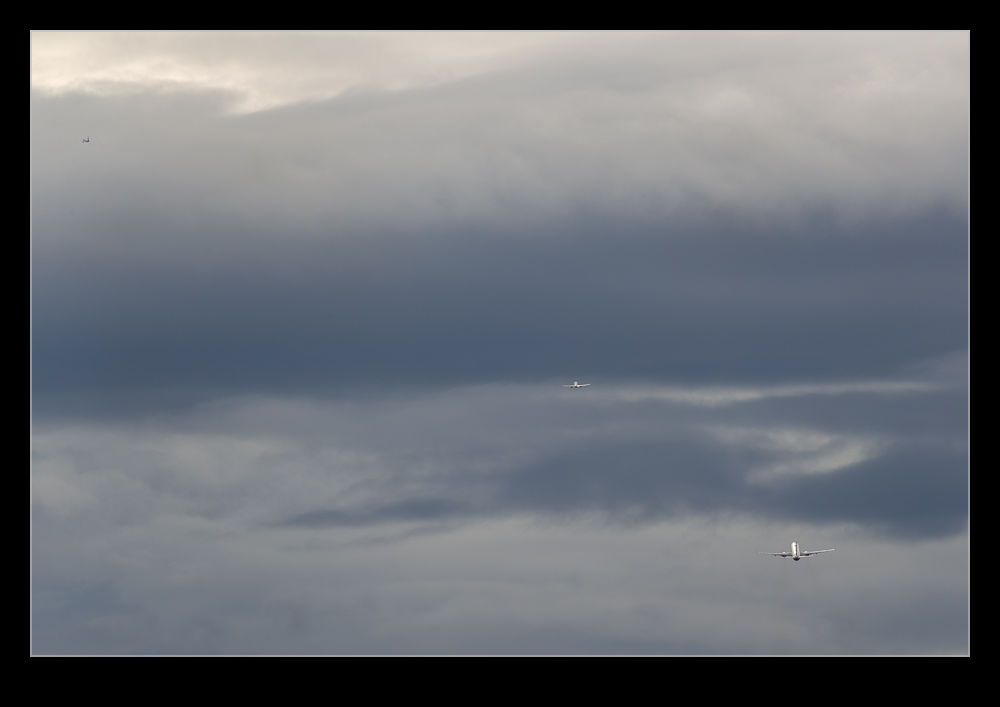 Sometimes you find yourself in a position that yields a shot that you hadn’t anticipated. Normally shooting stuff over a long distance doesn’t do much for you because atmospheric distortion means the shots are of no use. However, sometimes the conditions are clear and things show up better. In this case I was shooting some jets on final to SeaTac. The position meant I had a good view of jets that were climbing out on departure. The departure path from SeaTac to the south is straight for a long time so you could get two or three jets climbing out in sequence. In this shot I got the three of them.
Sometimes you find yourself in a position that yields a shot that you hadn’t anticipated. Normally shooting stuff over a long distance doesn’t do much for you because atmospheric distortion means the shots are of no use. However, sometimes the conditions are clear and things show up better. In this case I was shooting some jets on final to SeaTac. The position meant I had a good view of jets that were climbing out on departure. The departure path from SeaTac to the south is straight for a long time so you could get two or three jets climbing out in sequence. In this shot I got the three of them.
Tag Archives: aircraft
A Caravan on Floats (Despite My Previous Comments)
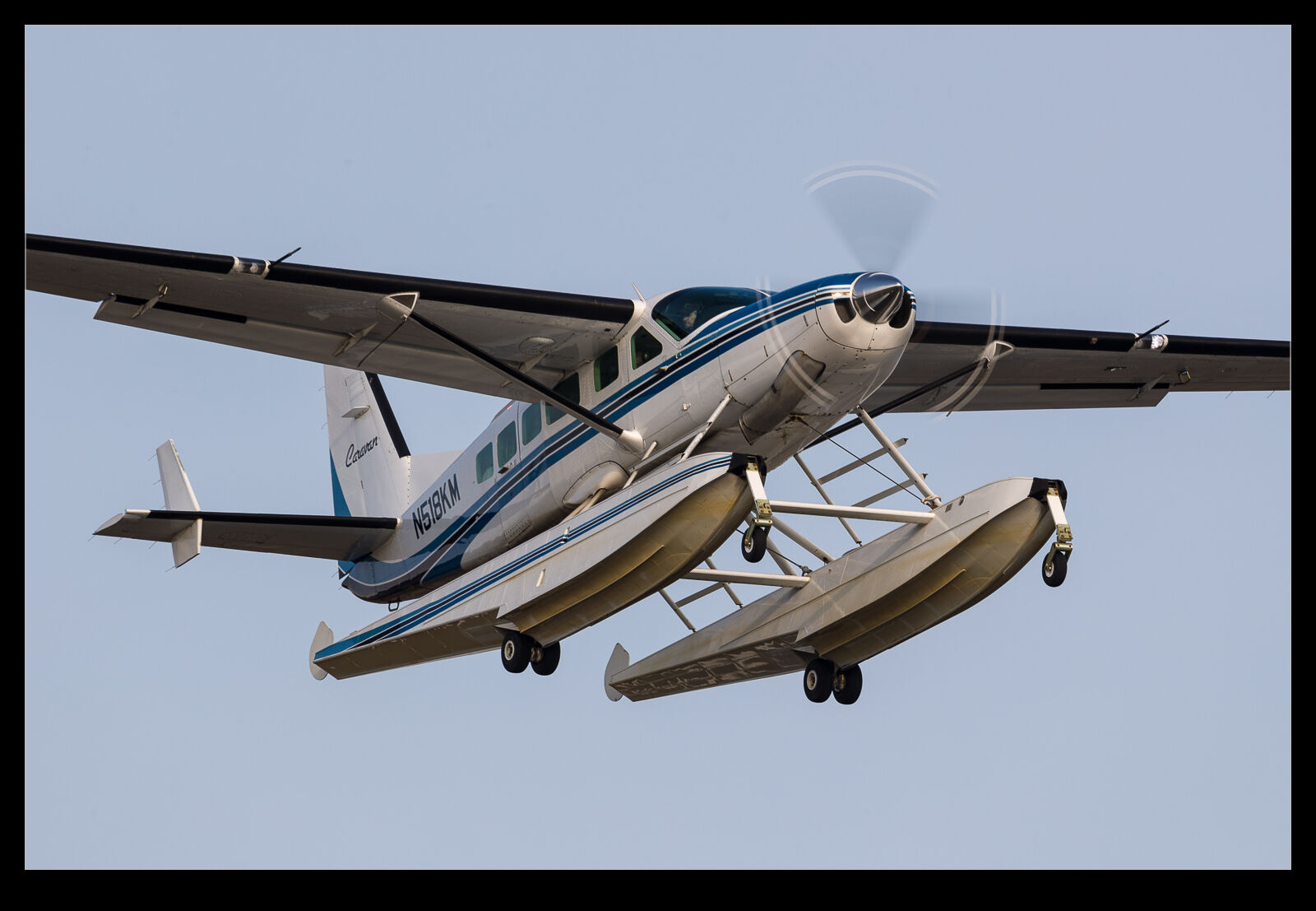 When I watched a Cessna Caravan on floats landing in Vancouver Harbour, I was rather critical of its water handling characteristics. It wallowed horribly and didn’t look like it was supposed to be there at all. However, the Caravan is not a bad plane and it is quite a rugged workhorse so I don’t have a gripe with it per se. Another float equipped example took off from Paine Field while I was awaiting something else and the combination of the afternoon light and the closeness to the plane meant I was rather pleased with the shots that were possible.
When I watched a Cessna Caravan on floats landing in Vancouver Harbour, I was rather critical of its water handling characteristics. It wallowed horribly and didn’t look like it was supposed to be there at all. However, the Caravan is not a bad plane and it is quite a rugged workhorse so I don’t have a gripe with it per se. Another float equipped example took off from Paine Field while I was awaiting something else and the combination of the afternoon light and the closeness to the plane meant I was rather pleased with the shots that were possible.
Finally, We Get What We Came For
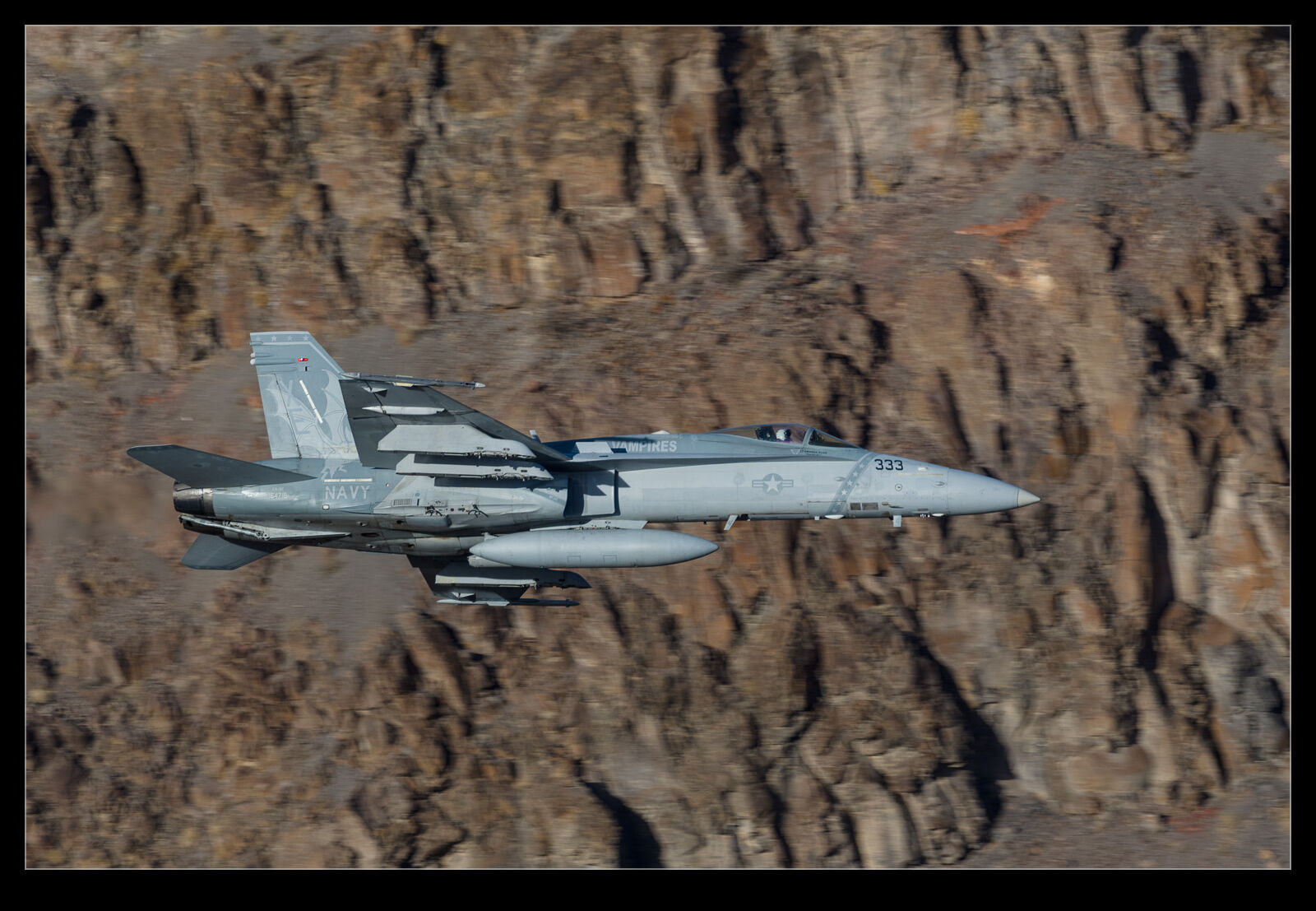 As my day at the canyon continued (you can read about the beginnings here), I got a bit more luck. The Navy came to the rescue with some Hornets and Super Hornets making their way through the canyon. One came in at an odd angle and then pulled out of the canyon over the overlook location. This was fine for me but probably annoyed those further down the canyon.
As my day at the canyon continued (you can read about the beginnings here), I got a bit more luck. The Navy came to the rescue with some Hornets and Super Hornets making their way through the canyon. One came in at an odd angle and then pulled out of the canyon over the overlook location. This was fine for me but probably annoyed those further down the canyon.
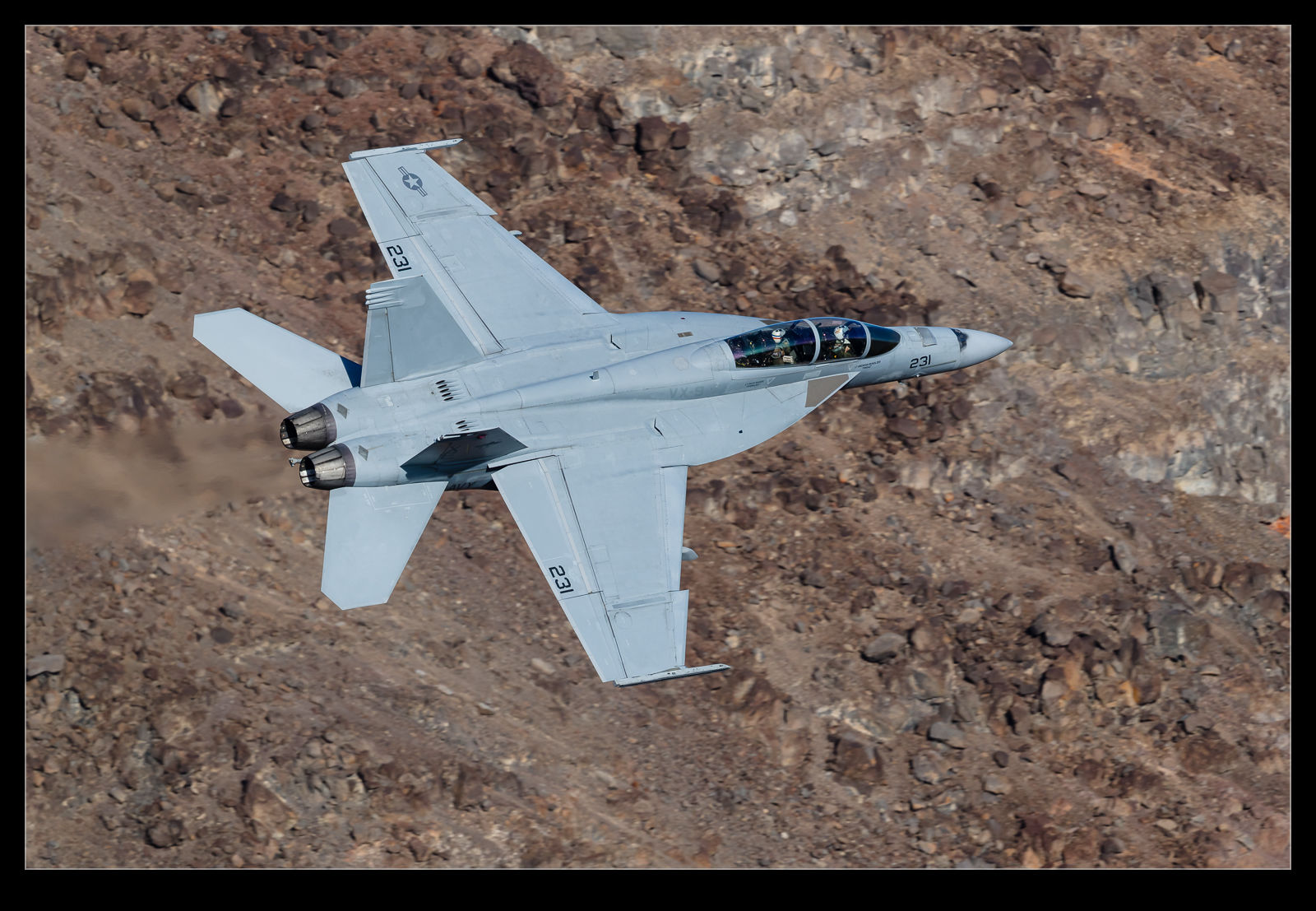 Then we got something a lot more like what we had anticipated. Jets came in along the angle from the highway starting out a lot lower than those that had come across the ridge. They could drop in a lot more quickly and be deeper into the canyon as they came by. This was what it was all about. They provided a last minute contribution to what I had come for and I was very grateful. A few more would have been good but it was okay.
Then we got something a lot more like what we had anticipated. Jets came in along the angle from the highway starting out a lot lower than those that had come across the ridge. They could drop in a lot more quickly and be deeper into the canyon as they came by. This was what it was all about. They provided a last minute contribution to what I had come for and I was very grateful. A few more would have been good but it was okay.
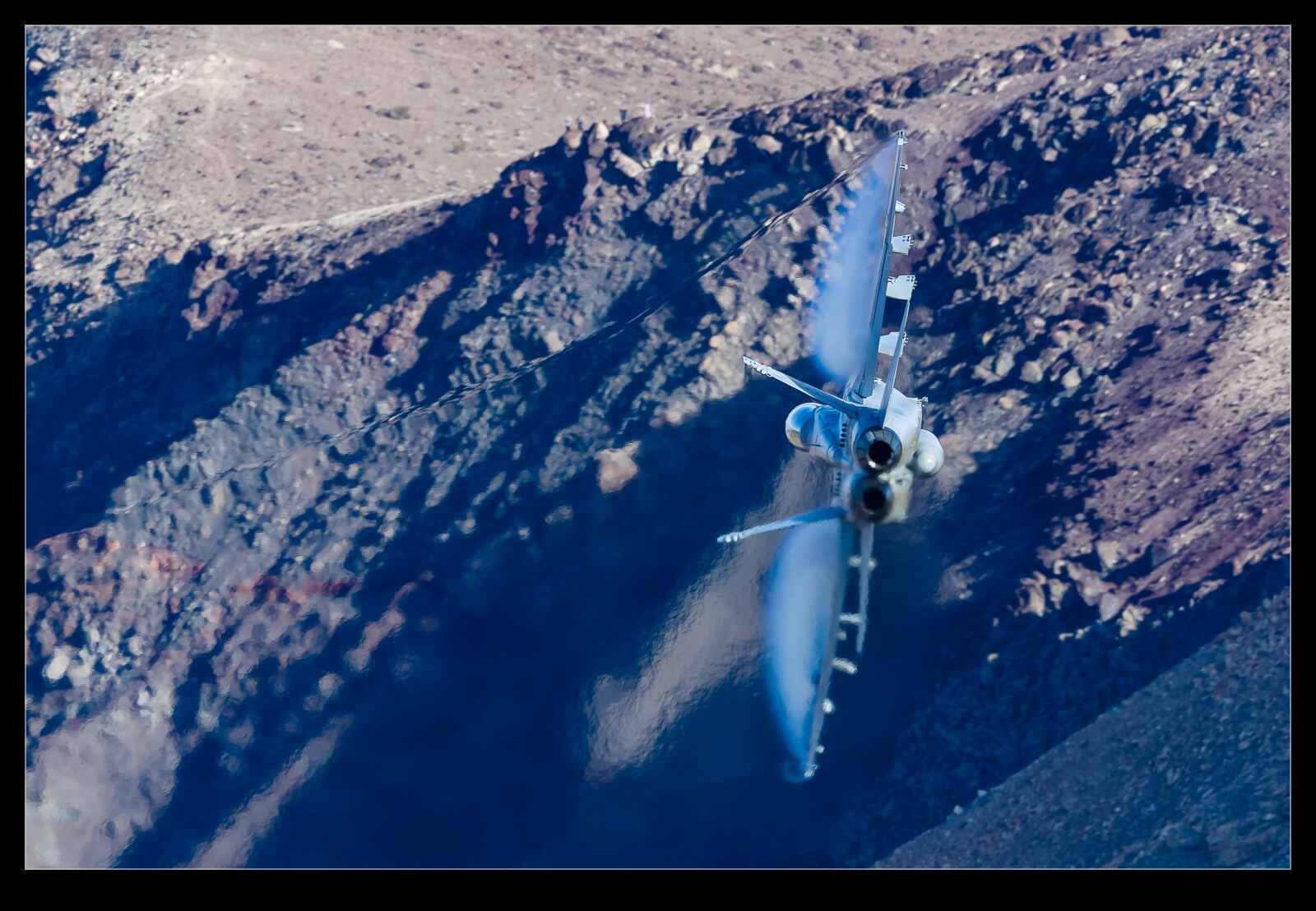 Once disappointing aspect of this was that, with so few jets coming through, I shot all of them. I didn’t have the opportunity to waste so I never got to keep the camera down and just appreciate the jets transitioning through below me for what it was. On my next trip I will hopefully get to do that as well as get some shots.
Once disappointing aspect of this was that, with so few jets coming through, I shot all of them. I didn’t have the opportunity to waste so I never got to keep the camera down and just appreciate the jets transitioning through below me for what it was. On my next trip I will hopefully get to do that as well as get some shots.
- A US Navy Boeing F/A-18E Super Hornet flies through the Sidewinder transition in Death Valley CA.
- A US Navy Boeing F/A-18F Super Hornet flies through the Sidewinder transition in Death Valley CA.
- A US Navy Boeing F/A-18F Super Hornet flies through the Sidewinder transition in Death Valley CA.
Boomer Position in a 747
 If you think of aerial refueling tankers, the Boeing 747 is not going to be the first plane that jumps to mind. However, a tanker version of the 747 was developed and is in service to this day in Iran. I haven’t seen one of those planes but, before they were built, Boeing undertook testing of the configuration on their testbed, the original 747 prototype. This is on display at the Museum of Flight in Seattle. When we were walking through the fuselage, we got to the read and found the boomer station. Apparently, it was not removed after installation. It looks remarkably similar to that from a KC-135 so I guess they ported the design across rather than come up with something significantly different.
If you think of aerial refueling tankers, the Boeing 747 is not going to be the first plane that jumps to mind. However, a tanker version of the 747 was developed and is in service to this day in Iran. I haven’t seen one of those planes but, before they were built, Boeing undertook testing of the configuration on their testbed, the original 747 prototype. This is on display at the Museum of Flight in Seattle. When we were walking through the fuselage, we got to the read and found the boomer station. Apparently, it was not removed after installation. It looks remarkably similar to that from a KC-135 so I guess they ported the design across rather than come up with something significantly different.
My First Trip to the Canyon
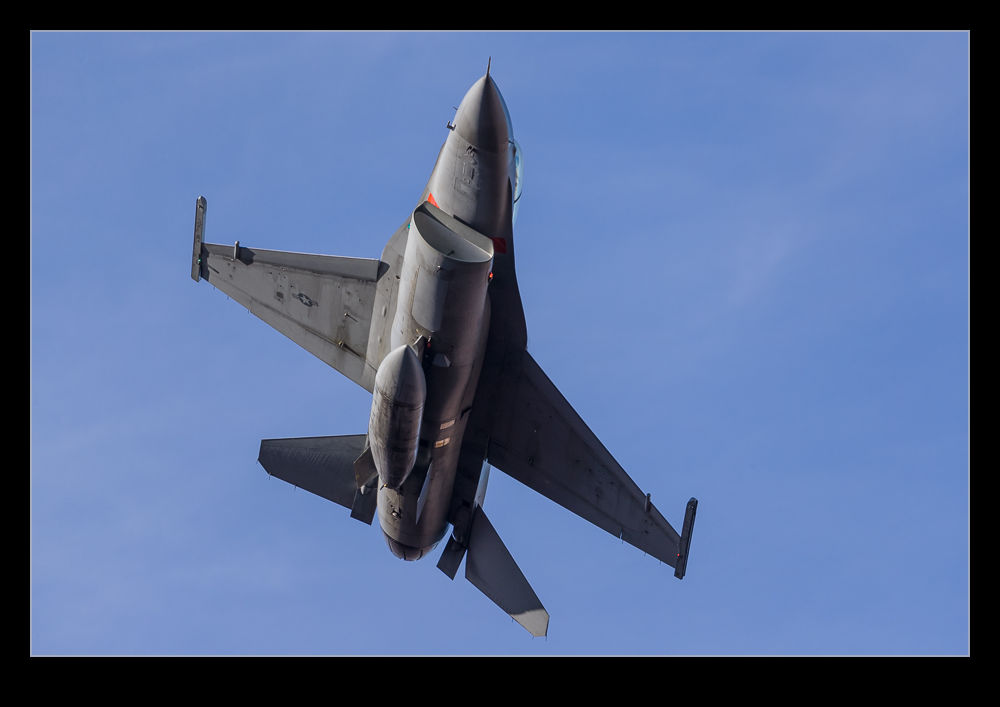 Photographing low flying jets in their environment is a popular challenge. The Loop in Wales is a great hunting ground. I have driven through there a few times and flown through there once but I have never been on a photo expedition there. Once I got close to setting up a trip but things got in the way. In the US, Rainbow Canyon is a popular spot. This canyon is known by a variety of names but it is well known for having jets flying through below the rim of the canyon so you can get shots of them beneath you.
Photographing low flying jets in their environment is a popular challenge. The Loop in Wales is a great hunting ground. I have driven through there a few times and flown through there once but I have never been on a photo expedition there. Once I got close to setting up a trip but things got in the way. In the US, Rainbow Canyon is a popular spot. This canyon is known by a variety of names but it is well known for having jets flying through below the rim of the canyon so you can get shots of them beneath you.
 I arranged to head there a short while ago with a buddy of mine. The two of us were going to meet in LA and head up. Sadly, he was unable to make the trip at the last moment but I figured I would go anyway as winter is a more acceptable time to be in Death Valley National Park and the chances of finding the time again soon were limited. I did stay up in Palmdale to shorten the drive a bit.
I arranged to head there a short while ago with a buddy of mine. The two of us were going to meet in LA and head up. Sadly, he was unable to make the trip at the last moment but I figured I would go anyway as winter is a more acceptable time to be in Death Valley National Park and the chances of finding the time again soon were limited. I did stay up in Palmdale to shorten the drive a bit.
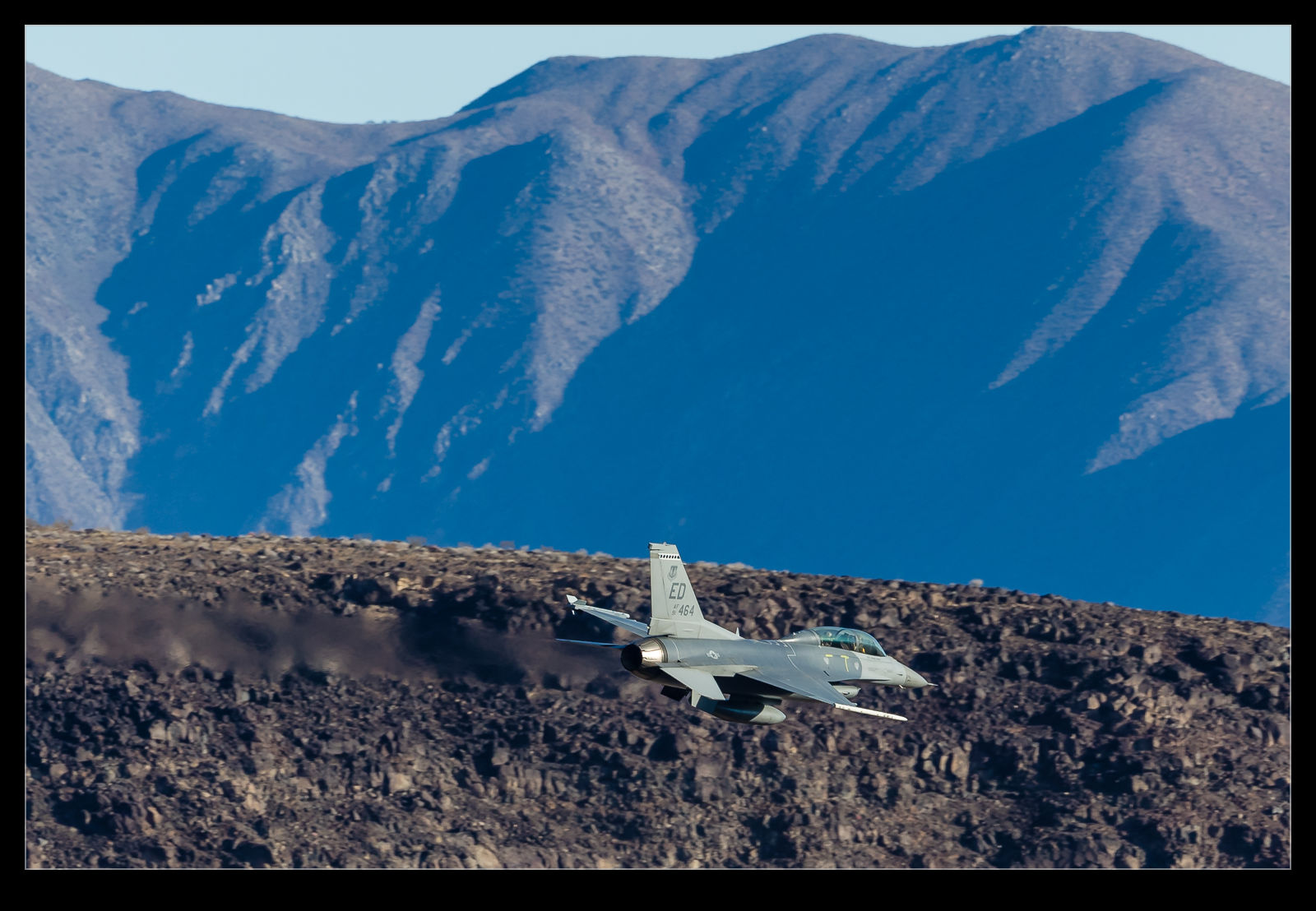 The trip had mixed results. We did not have a busy day. Plenty of jets could be heard overhead or in the distance but the number coming through the canyon was low. I probably got nine passes that day. More disappointing was how some of them were quite high and not against the backdrop of the rocks. Things did improve though…
The trip had mixed results. We did not have a busy day. Plenty of jets could be heard overhead or in the distance but the number coming through the canyon was low. I probably got nine passes that day. More disappointing was how some of them were quite high and not against the backdrop of the rocks. Things did improve though…
Trailing Static Cones
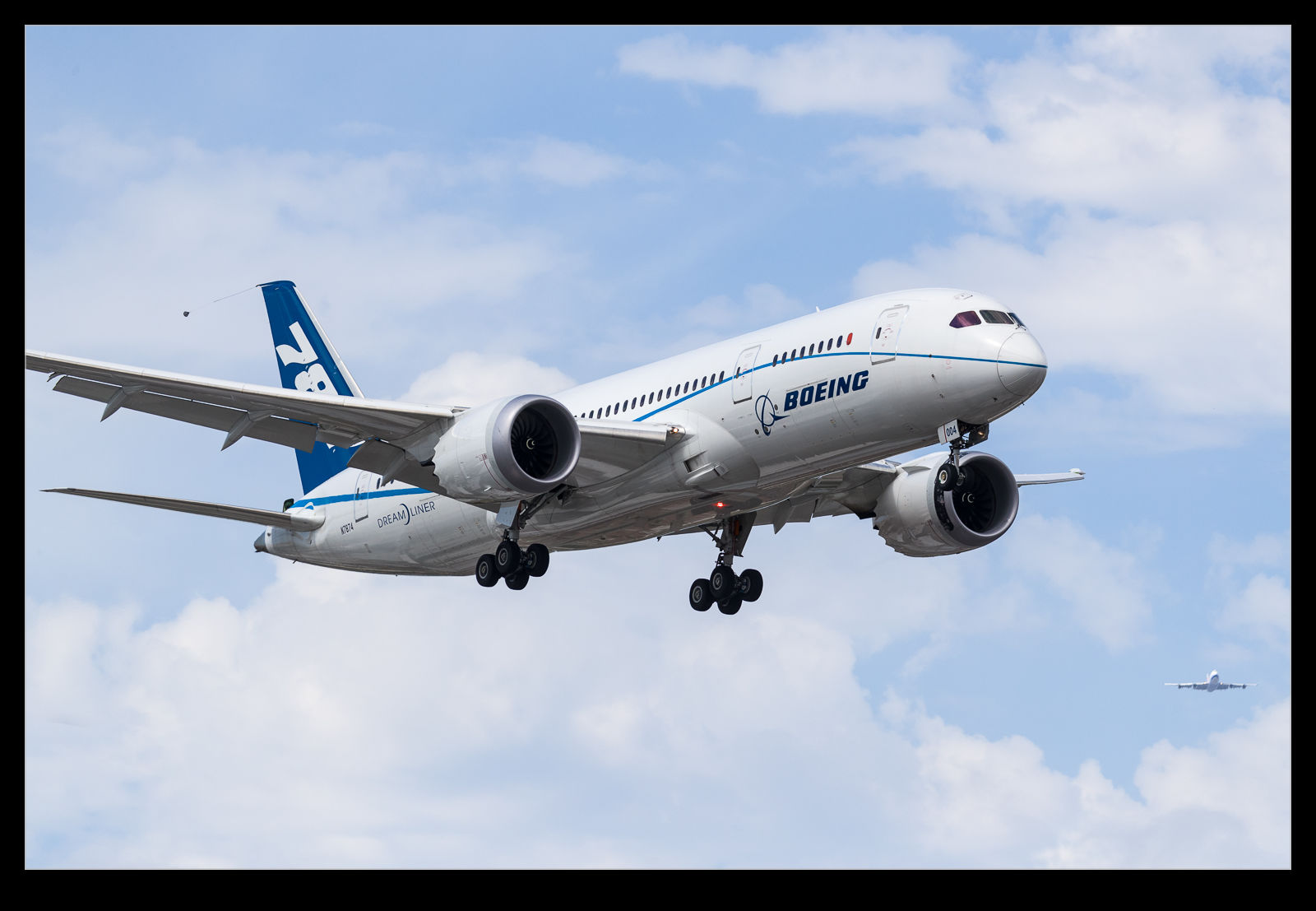 For the people that don’t care for my aviation posts, this one won’t be of interest. For the aviation fans that don’t care about the techie stuff, this will also be of limited interest. That probably leaves a very small group of readers by now (Gary, I am trusting you are still here). This is about a piece of flight test instrumentation that often causes questions when people see it. It is the trailing static cone.
For the people that don’t care for my aviation posts, this one won’t be of interest. For the aviation fans that don’t care about the techie stuff, this will also be of limited interest. That probably leaves a very small group of readers by now (Gary, I am trusting you are still here). This is about a piece of flight test instrumentation that often causes questions when people see it. It is the trailing static cone.
 The aircraft has sensors that measure air data, two of the most important of which are the pitot probe and the static port. The pitot probe measures the dynamic pressure of the air which increases as the speed increases. The static port measures the air around the aircraft. The difference between the two is used to determine the speed of the aircraft and the static is used to determine the altitude. These are both vital information for a pilot. However, the aircraft affects the flow of the air around it so, while you can calculate what the pressures should be, you need to validate what the actual readings are. The first flights are carried out prior to calibrating the system so you need to have a bit of margin in the speeds you use until you have confidence in the readings.
The aircraft has sensors that measure air data, two of the most important of which are the pitot probe and the static port. The pitot probe measures the dynamic pressure of the air which increases as the speed increases. The static port measures the air around the aircraft. The difference between the two is used to determine the speed of the aircraft and the static is used to determine the altitude. These are both vital information for a pilot. However, the aircraft affects the flow of the air around it so, while you can calculate what the pressures should be, you need to validate what the actual readings are. The first flights are carried out prior to calibrating the system so you need to have a bit of margin in the speeds you use until you have confidence in the readings.
 Measuring static pressure is hard to do. The plane will have a static port on the skin of the plane as well as possibly incorporated with the pitot head. However, the air has accelerated to go around the fuselage so it is assumed to have a lower pressure than ambient. Because the plane is disturbing the flow, you need a way to measure the pressure some distance away from the plane. The answer is a trailing static cone.
Measuring static pressure is hard to do. The plane will have a static port on the skin of the plane as well as possibly incorporated with the pitot head. However, the air has accelerated to go around the fuselage so it is assumed to have a lower pressure than ambient. Because the plane is disturbing the flow, you need a way to measure the pressure some distance away from the plane. The answer is a trailing static cone.
 This cone incorporates pressure measurement sensors and it attached to a long cable. This is held on a reel inside the aircraft and fed out of the aircraft at the rear. For airliners, this is usually through a modification to the top of the fin. A comparison between the test aircraft and a production jet will show the different structure. The cable dangles out of the fin and, as the speed increases, the cone pulls the cable taught and streams backwards.
This cone incorporates pressure measurement sensors and it attached to a long cable. This is held on a reel inside the aircraft and fed out of the aircraft at the rear. For airliners, this is usually through a modification to the top of the fin. A comparison between the test aircraft and a production jet will show the different structure. The cable dangles out of the fin and, as the speed increases, the cone pulls the cable taught and streams backwards.
 When the testing is required, the cable is winched out and the cone is a long way behind the aircraft in what is relatively undisturbed airflow. If you go to the Museum of Flight, the prototype 747 is on display and it includes the trailing cone equipment in the fuselage. The reel is shown in its mounting location and the trailing cone is hung inside to allow you to take a look at it.
When the testing is required, the cable is winched out and the cone is a long way behind the aircraft in what is relatively undisturbed airflow. If you go to the Museum of Flight, the prototype 747 is on display and it includes the trailing cone equipment in the fuselage. The reel is shown in its mounting location and the trailing cone is hung inside to allow you to take a look at it.
Two Avantis in One Go!
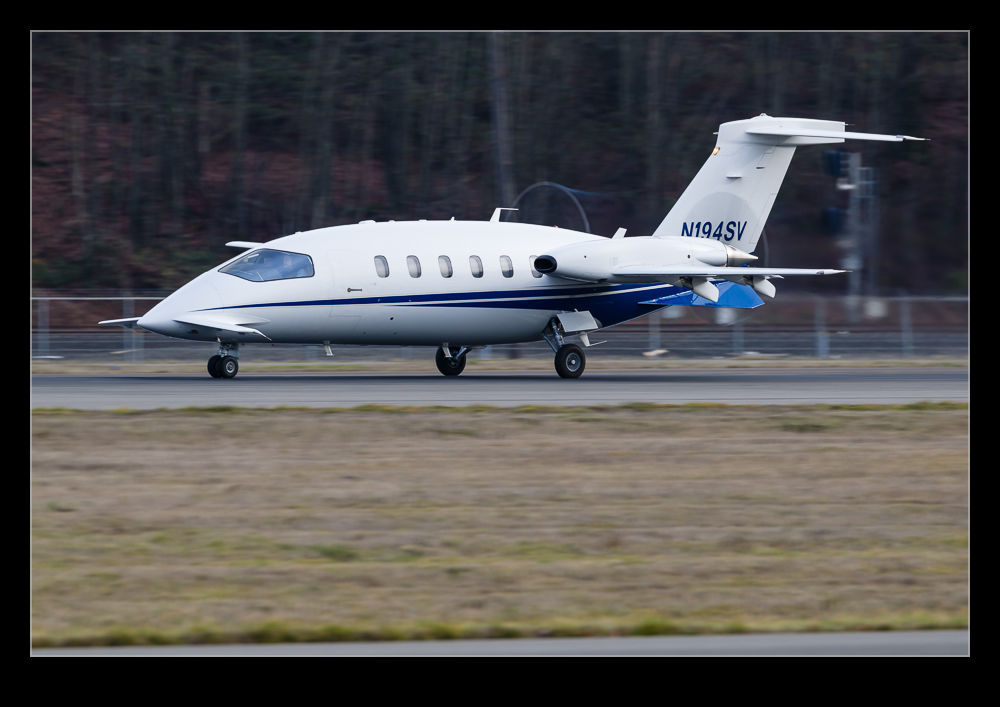 Not long ago, I posted about seeing an Avanti for the first time in a while. The lack of Avantis having been broken, I have seen a couple more. I saw that one had come in to Boeing Field and I was there before it fired up for its next flight. It taxied out on the opposite side of the field and then took off to the northeast.
Not long ago, I posted about seeing an Avanti for the first time in a while. The lack of Avantis having been broken, I have seen a couple more. I saw that one had come in to Boeing Field and I was there before it fired up for its next flight. It taxied out on the opposite side of the field and then took off to the northeast.
 A short while later, I saw a silhouette of a plane on approach and looked closer to see what it was. It looked pretty like an Avanti so I figured it was the same aircraft returning for some reason. I was a bit bothered that something might be wrong but happy to get another chance to shoot it. As it got closer thought, it was clearly not in the same paint scheme. Instead, it turned out to be a Canadian registered example and a pretty nice looking one at that.
A short while later, I saw a silhouette of a plane on approach and looked closer to see what it was. It looked pretty like an Avanti so I figured it was the same aircraft returning for some reason. I was a bit bothered that something might be wrong but happy to get another chance to shoot it. As it got closer thought, it was clearly not in the same paint scheme. Instead, it turned out to be a Canadian registered example and a pretty nice looking one at that.
 Getting two Avantis within a short space of time was an outcome I was pretty pleased with. Unfortunately, I couldn’t hang around to get the departure of the second example.
Getting two Avantis within a short space of time was an outcome I was pretty pleased with. Unfortunately, I couldn’t hang around to get the departure of the second example.
Korean Air Dreamliner on Test
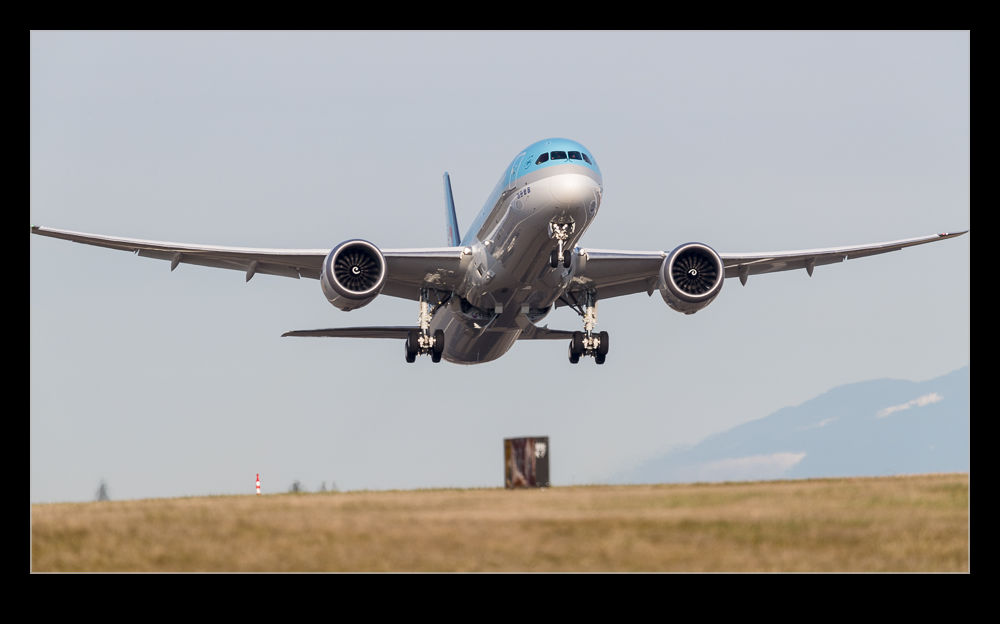 I had a couple of encounters with the same jet while it was on test. (It’s brake dust already showed up in this post.) This 787-9 is, by now, part of the Korean Air fleet. I saw it depart from Paine Field one evening in pleasant light. The low sun angle really brought out the shape of the underside of the wing in a way that normally you just don’t get to appreciate. It showed up a second time while I was out to get the farewell flight of the Delta 747 which I wrote about here. It came in at a similar time and the wet weather helped to make the pale blue color scheme pop a bit more.
I had a couple of encounters with the same jet while it was on test. (It’s brake dust already showed up in this post.) This 787-9 is, by now, part of the Korean Air fleet. I saw it depart from Paine Field one evening in pleasant light. The low sun angle really brought out the shape of the underside of the wing in a way that normally you just don’t get to appreciate. It showed up a second time while I was out to get the farewell flight of the Delta 747 which I wrote about here. It came in at a similar time and the wet weather helped to make the pale blue color scheme pop a bit more.
One More Chance With Virgin’s A340s
 Substitutions on the Seattle route are not just limited to Lufthansa. Virgin Atlantic has been flying the route with the 787-9 but, as with a lot of the Rolls Dreamliner operators, Virgin has been suffering from engine shortages while the blade cracking problems are dealt with. They have brought the A340-600 on to the route in the interim. I thought I wouldn’t be seeing these again after the last examples at SFO I saw but I got another chance. Not great light but it was good to see one more time.
Substitutions on the Seattle route are not just limited to Lufthansa. Virgin Atlantic has been flying the route with the 787-9 but, as with a lot of the Rolls Dreamliner operators, Virgin has been suffering from engine shortages while the blade cracking problems are dealt with. They have brought the A340-600 on to the route in the interim. I thought I wouldn’t be seeing these again after the last examples at SFO I saw but I got another chance. Not great light but it was good to see one more time.
Seasprites Don’t Show Up Too Often
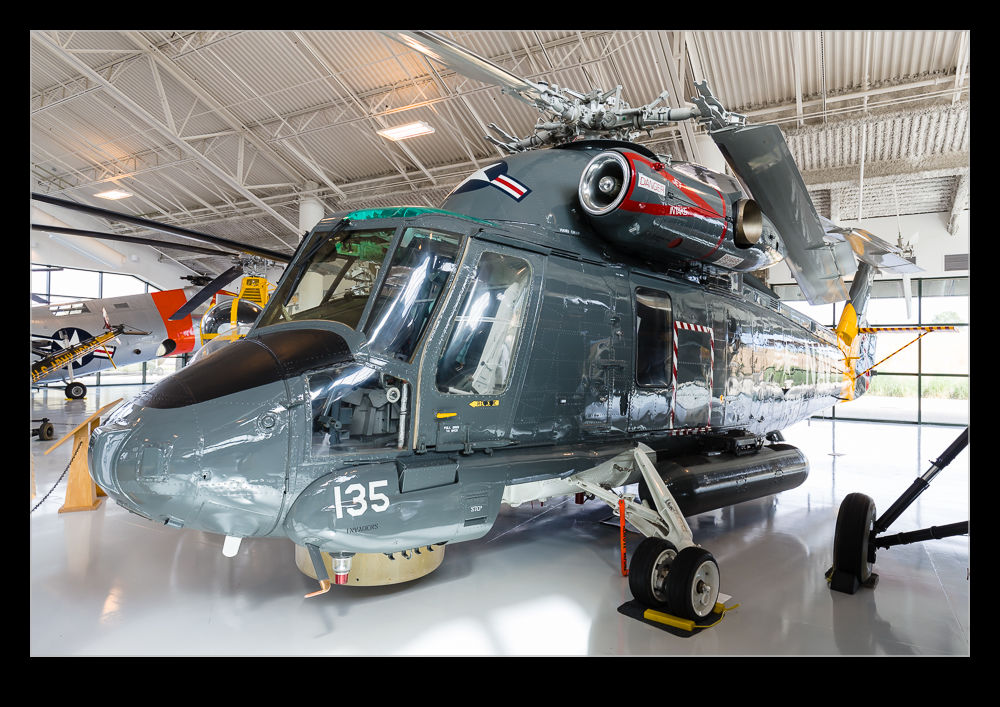 The first time I ever heard of the Kaman Seasprite was in the 1980s when Airfix released a new kit of the SH-2F variant. I thought it was a cool looking model but I wasn’t very aware of what it was used for. It was already getting towards the end of its time in service with the US Navy with the SH-60B Seahawk becoming the platform for shipboard helicopters. A few export programs went forward but these were not particularly successful.
The first time I ever heard of the Kaman Seasprite was in the 1980s when Airfix released a new kit of the SH-2F variant. I thought it was a cool looking model but I wasn’t very aware of what it was used for. It was already getting towards the end of its time in service with the US Navy with the SH-60B Seahawk becoming the platform for shipboard helicopters. A few export programs went forward but these were not particularly successful.
 I am not sure whether I have ever seen a Seasprite for real prior to visiting Evergreen at McMinnville. They have a corner that is stacked with helicopters. A Seasprite is one of the collection and I was pleasantly surprised to see it. Given the number of airframes they have in this corner, everything is jammed together. This made it hard to get a nice angle on the Seasprite but I was able to get a few shots anyway.
I am not sure whether I have ever seen a Seasprite for real prior to visiting Evergreen at McMinnville. They have a corner that is stacked with helicopters. A Seasprite is one of the collection and I was pleasantly surprised to see it. Given the number of airframes they have in this corner, everything is jammed together. This made it hard to get a nice angle on the Seasprite but I was able to get a few shots anyway.
